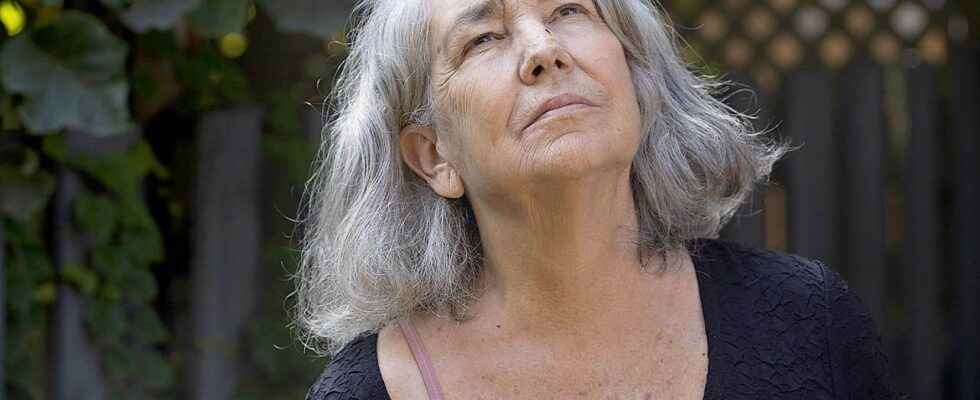“I saw them. / They, / their camouflaged blue faces. / They, / I saw them / all / pass in the street / barefoot souls, / looking behind them, / worried about being followed / by the feet of the storm, / moon thieves / they cross, / in disguise in normal women. / No one can recognize them / except those / who look like them. »
It is on these powerful words of the Syrian poet Maram al-Masri (Barefoot Souls) what opens To run awaythe new documentary by Carole Laganière, which offers a privileged incursion into a shelter for women who are victims of domestic violence.
Like the poet, the documentary filmmaker captures the turmoil, the worried looks, the restless minds that never find rest. And amid violence, injustice and hurt, she also finds, in love, solidarity and sisterhood, the light that persists in making its way through the cracks of misfortune.
Through the testimonies of Maude, Sophie, Yzabel and many others, To run away is the story of the courage and the resistance, of the introspection and the quest for oneself of those who have found the strength to leave, for themselves or for their children, to seek elsewhere than in the gaze of the other. esteem that has been stolen from them, to envision a future — and a love — that is different and beautiful.
“I have been carrying this subject for as long as I have been making films,” says Carole Laganière, met at her home in the Rosemont district of Montreal. When I was in CEGEP, a friend found herself struggling with an abusive husband. She was 24 years old. It troubled me deeply. She was a smart, eloquent, strong girl. I did not understand. This desire to understand has always stayed with me. »
To know how to listen
This is not the first time that Carole Laganière has tackled a subject that has such an emotional charge. In bride of life (2001), she gave voice to children who had experienced the death of a loved one. In 2014, with Farewellsshe turned her camera to end-of-life patients in a hospice.
Endowed with a keen sense of observation, the documentary filmmaker also has a rare gift: listening, the kind that allows confidences to emerge, of course, but which also allows the subjects to exist in their full truth. “When we talk about violence against women, we often forget to listen to the main stakeholders. We concentrate on the search for explanations, causes, on the detection of patterns. However, as soon as we listen, we realize the extent of our prejudices. Therefore, we can admit the incomprehensible: it can happen to anyone. »
When we talk about violence against women, we often forget to listen to the main stakeholders. We concentrate on the search for explanations, causes, on the detection of patterns. However, as soon as we listen, we realize the extent of our prejudices.
The documentary filmmaker spent nearly three months with the residents to testify to their experiences and their journey. The diversity of the victims, their culture, their social class, their sexual orientation and their background testifies to the extent of the problem and the absence of a pattern leading to a situation of conjugal violence.
“One of the participants, Sophie, works in the health sector and contributed to the writing of a thesis devoted to interveners in the context of domestic violence. Despite this, she took time to identify herself as a victim, even though she had been hit by her partner. The latter told him that no one else put him in such a state of anger. She had come to believe it was her fault. As explained by many of the women interviewed, their ex destroys them so much that they end up adhering to the scenario he has created, to this alternative world where they deserve what is happening to them. »
Sorority
Although violence, fears, wounds and dizziness are at the heart of the film’s subject, we especially retain the particular dynamic that emerges in this place where time seems momentarily suspended, focused on reconstruction and hope, with all that that entails of doubt, latency and falls, and where the victims are also, for the first time in a long time, uprooted from immense solitude.
“There is a great feeling of sisterhood among the women to which—it is important to emphasize—the workers who work with them are no strangers. It is thanks to them that the victims feel confident, feel recognized and can create links. The people who work in the shelters do not arrive there by chance. They have all had overwhelming experiences that free them from judgment. »
Together, they can consider the future, put words to the fear that gnaws at them, the burden of flight and the dangers that await them. Even if the documentary is not strictly speaking political, Carole Laganière addresses some very worrying subjects: the lack of accommodation and possibilities of refuge for the victims – a problem exacerbated by the pandemic – as well as the flaws in the justice system. .
“I take from this that women are not believed very much when it comes to their physical integrity, especially if the man has a status, a good job and is respected in society. Many get away with no penalty, or with a reduced sentence. It is very anxiety-provoking for the victims, and it contributes to the fact that they are afraid to denounce or to leave. They know they will never have peace of mind. »
